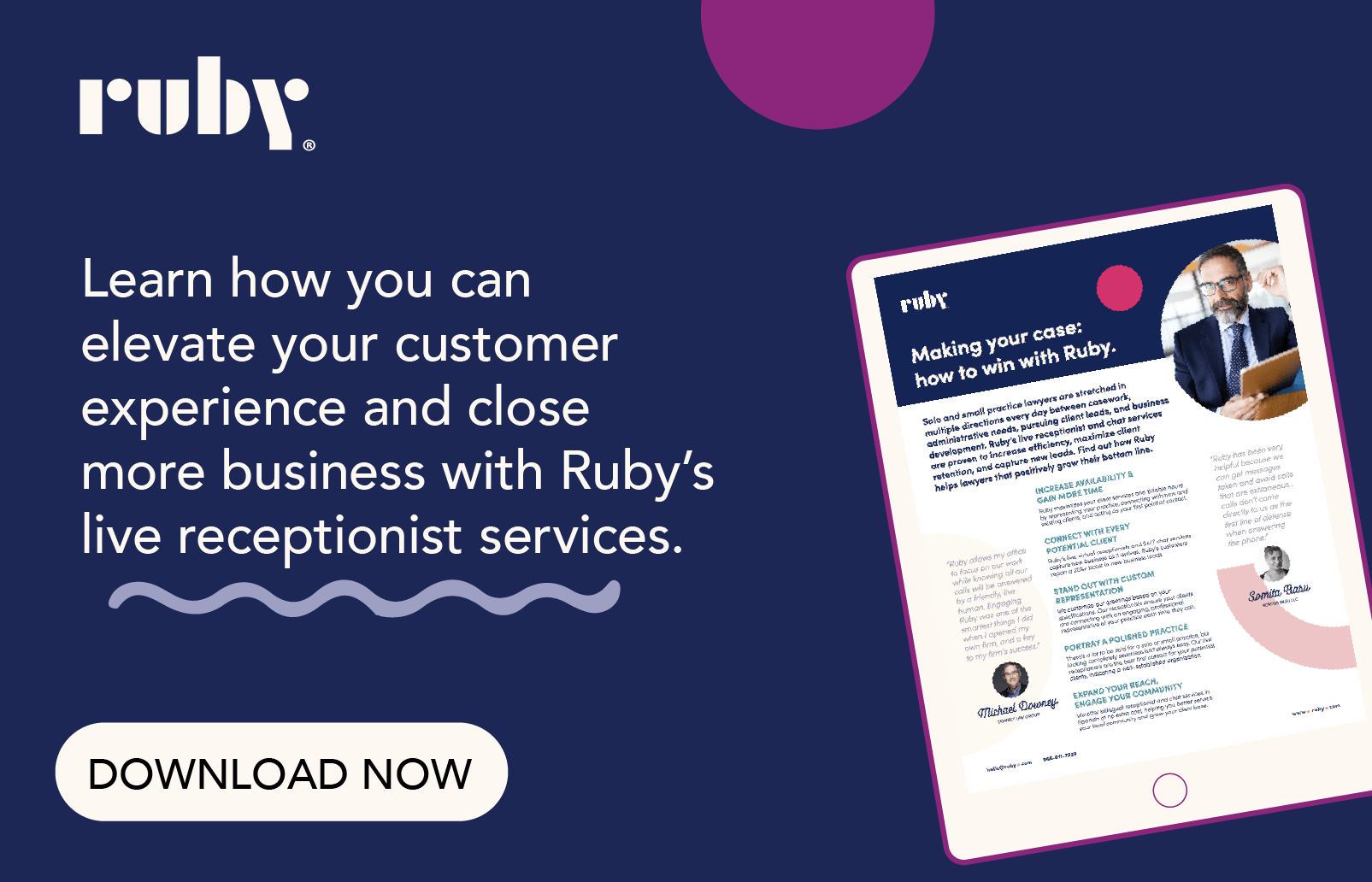Taking your practice virtual or investing in cloud-based software has likely been on your to-do list for years. Now, just like that, remote work and virtual law firms are here to stay.

Perhaps you’d dipped your toe in, purchasing case management software or dabbling in automated email marketing. Then the pandemic hit, and you were violently shoved from “it’s on the list” to scrambling to implement all the tools in one fell swoop.
As the dust from the initial rush begins to settle, it’s becoming clear that remote work is here to stay. Many large companies — Google, Facebook, Twitter — have stated they’ll allow employees to elect to work from home permanently, and 40% of workers claim they’ll take up that offer.
The question now becomes, how can I build sustainable processes that optimize my virtual work, versus simply survive it?
It’s Not Just About Where, But When
Though technology has been pushing the definition of a “typical workday” for the past several years, most businesses and their employees still operate within an agreed-upon timeframe. The benefit of shared work hours is you can easily access others for information or feedback, as well as separate work time from personal time.
Moving to a virtual office, along with the stress of many working parents needing to adjust their schedules for their child’s schooling, has meant more teams are working asynchronously — at different times. Establishing a virtual office means you must consider not only where you work but also when.
Rethinking the Current Workday Model
Flexibility is among the top reasons for wanting to work from home, so consider these questions to set yourself and your team up for long-term success in this new model.
- When do your clients need you? Has this changed since the pandemic?
- When does your team need you?
- What hours of the day are you most productive?
- When do you experience the most distractions?
- When do you need/want to have personal or family time?
Upon completing this exercise, it may be that you or your team prefer to work longer hours for a shorter week or need to space out your hours for more on certain days and less on others. You may even discover your clients now need you at non-traditional times. Ruby — a live virtual receptionist and chat service company that primarily serves the legal community — has found call patterns have shifted significantly in 2020. For example, more calls are occurring on Tuesdays than Mondays, and weekend call volume has increased, as has the need for 24/7 answering of phone calls and website chats.
The point is, break out of the current workday paradigm and explore the options virtual work can provide. When employees have choices, that flexibility — and the ability to staff up and down to meet changing circumstances — makes the team more efficient and happier in their work.
Tools Are Great … When They Work Together
Ruby recently sat down with several attorney customers to discuss the software and tools they are using as a virtual practice, as well as how they are using them. Universally, the main piece of feedback is that the process of adding software and tools shouldn’t be rushed. Those who had to implement tools quickly due to the pandemic felt their workflows were disrupted more than streamlined initially.
Three Steps for Integrating Tech Into Your Workflow
While the need to change quickly can’t be helped, solo and small practice attorneys can successfully integrate tools to limit disruptions and even reduce their workload when following these steps.
- Map out your current process. Start with how potential clients find you, how you engage with them, and how you move them through to the contract. Once they’ve become a client, how do you manage their case? How are documents signed and stored? How do clients interact with you — phone, email, text messaging, a client portal? How and when do you bill?
- Review your process and highlight what areas take you the most time. By performing this exercise, many often find they spend more time working in the business than on the business—answering phone calls, scheduling meetings, sending out templated emails, or moving information from various channels into a case file. Repetitive or basic tasks and tasks outside of your expertise (e.g., digital marketing, customer experience) are perfect opportunities to explore software and augmented service solutions.
- Determine how the service or software integrate into your process. Once you’ve decided on a tool, go back to your process map and redraw, adjusting the steps as necessary based on the added features. For example, here’s how a virtual receptionist or live chat specialist could integrate into your workflow:
A potential client reaches your website via your Google Business listing …
- Ruby’s live chat specialist opens a chat after the visitor has been on the site for 20 seconds, asking if they have any questions. OR, the visitor sees a phone number in your header and calls your practice; Ruby’s friendly remote receptionist answers with your preferred greeting. Both the remote receptionist and chat specialist answer basic FAQs and gather intake information. The receptionist then either forward the call to you, takes a message, or sends the caller to voicemail based on your instructions.
- As a Clio or RocketMatter user, the intake information gathered by Ruby, as well as any messages or voicemails, is synced to your case management software, avoiding double entry.
Integrating a remote receptionist or chat specialist is only one example of how you can use outside tools tools to reduce distractions, improve the client experience, and help your practice grow. Check out Attorney at Work’s article on “Technology FAQs for the New Normal” for more resources on electronic signatures, practice management systems, cybersecurity considerations, laptop options, and more.
Do More of What You Love
The payoff of going all-in on remote practice and taking the time to optimize your workflow is that you are more able to focus on the things you do best and build a practice that works around your life. As one of Ruby’s customers, Heather, shares:
“The pace has definitely slowed down and made me more intentional about what kind of clients I choose to work with. I realize that busier is not always better. As a lawyer, it’s easy to fall into the misconception that you need to be really stressed and busy to make a living. I don’t plan to get back on the hamster wheel once things are back to “normal.” Normal felt like a heart attack all the time. I am liking the new work-life balance.”
To learn more about the benefits of integrating a virtual receptionist, check out “Making Your Case: How To Win with Ruby.”
SPONSORED CONTENT. Product Spotlight showcases content provided by Attorney at Work sponsors and advertisers. This does not constitute an endorsement by Attorney at Work. See Terms and Conditions for more information.





















